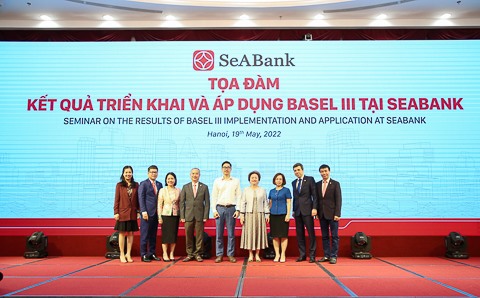On May 19, 2022, Southeast Asia Commercial Joint Stock Bank (SeABank, stock code SSB) hosted a seminar to announce the implementation and application of Basel III in business activities and risk management.
This helped SeABank improve its governance capability, financial soundness, risk management transparency, and market shock resistance have improved.
Basel III is a global set of risk management standards created in 2010 in response to the global financial crisis of 2008-2009 and amended in 2017 to strengthen the regulation, supervision and risk management of banks. As a result, a foundation for a long-term financial system is laid, potentially reducing systematic risk.
When implementing Basel III, SeABank will use internal models to optimize risk-weighted assets and capital. As a result, the bank will be able to balance better the risks and benefits associated with its capital holdings and improve liquidity and credit risk management.
SeABank uses the foundation internal rating method (F-IRB) for the credit risk component, the VaR model to estimate the capital required for market risk, and the Basel III criteria to determine the capital requirements for operational risk.
SeABank has also created tools for calculating and managing two liquidity-related metrics: the Liquidity Coverage Ratio (LCR) and the Net Stable Funding Ratio (NSFR). The LCR aims to ensure that banks have sufficient high-quality liquid assets to fund cash outflows for 30 days, especially during the stress period.
The NSFR is one of Basel III’s important modifications, which requires banks to maintain a sustainable funding structure by reducing reliance on short-term funding across all asset classes. This allows SeABank to conserve liquidity, secure the bank’s operations, and protect the interests of clients and partners even in stressful periods.
Together with SeABank’s Project on International Financial Reporting Standards (IFRS) implementation, which started in December 2020, the implementation and application of Basel III helped SeABank improve its resilience to macroeconomic changes, bringing trust and sustainable values to customers, especially as Covid-19 disrupted the economy in 2020-2021.
Previously, Moody’s upgraded the SeABank’s Baseline Credit Assessment (BCA) from B2 to B1 and maintained SeABank’s long-term deposit and issuer ratings at B1 for the fourth year in a row with a positive outlook. The bank’s charter capital has also been increased to US$722.18 million.




